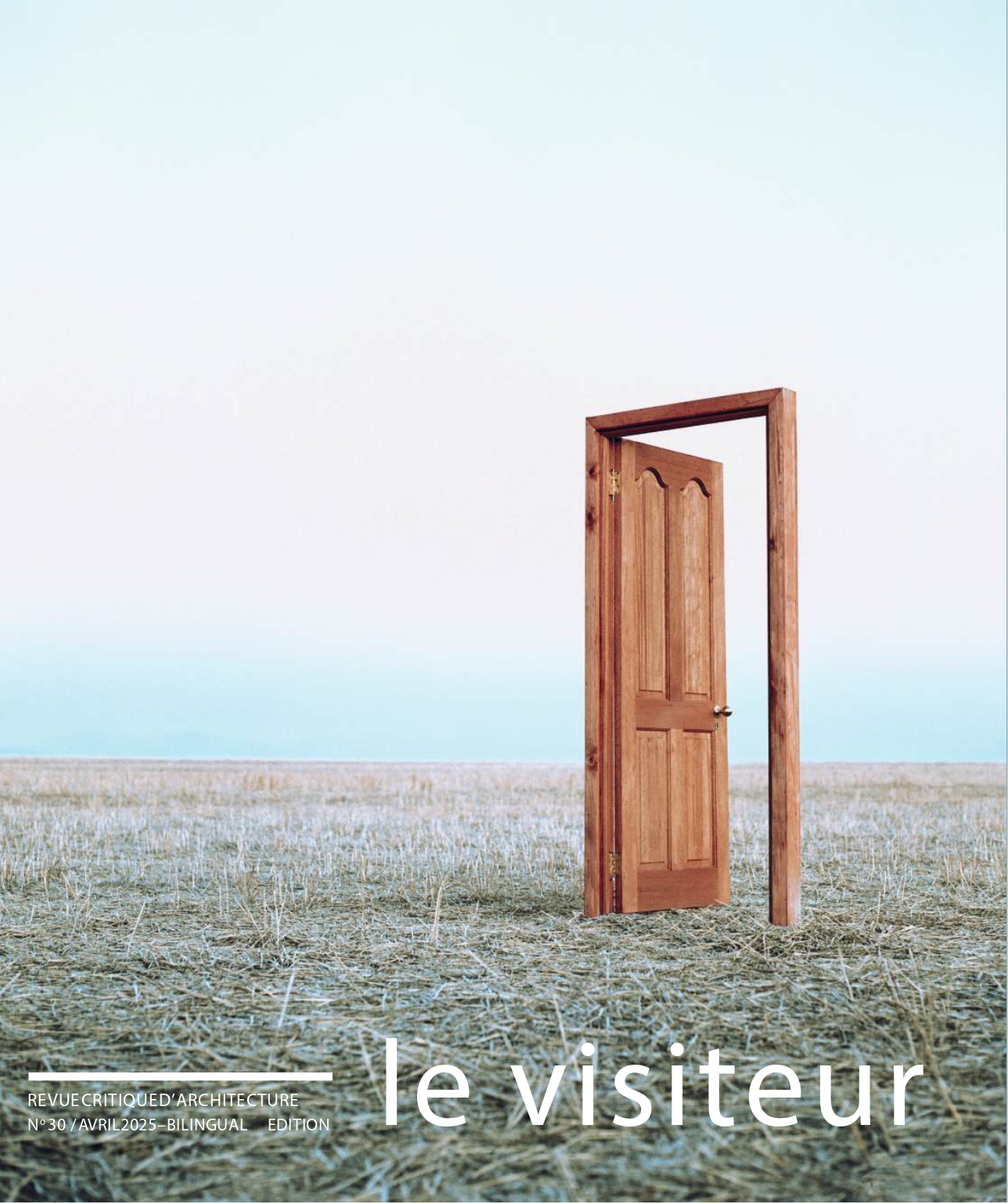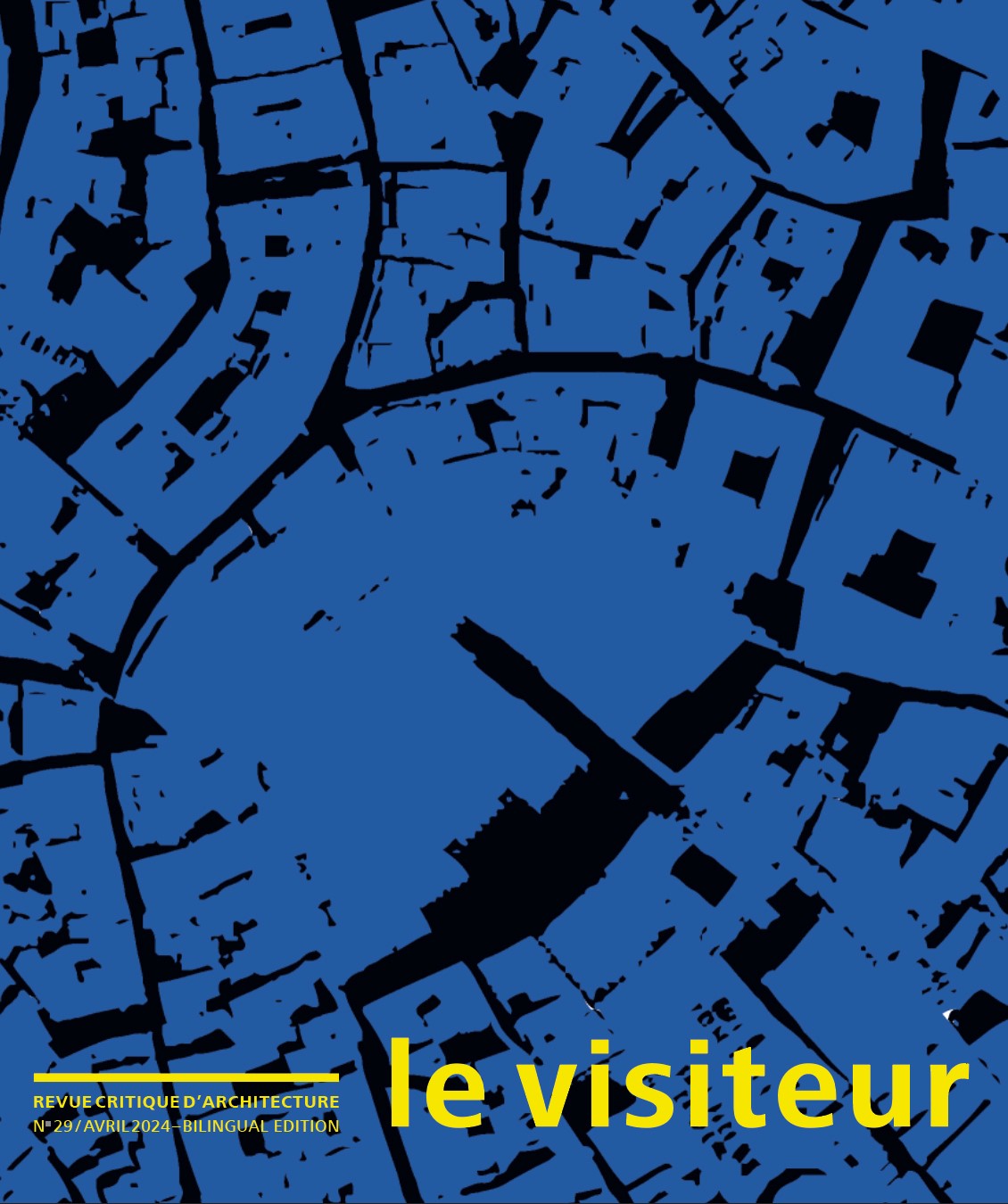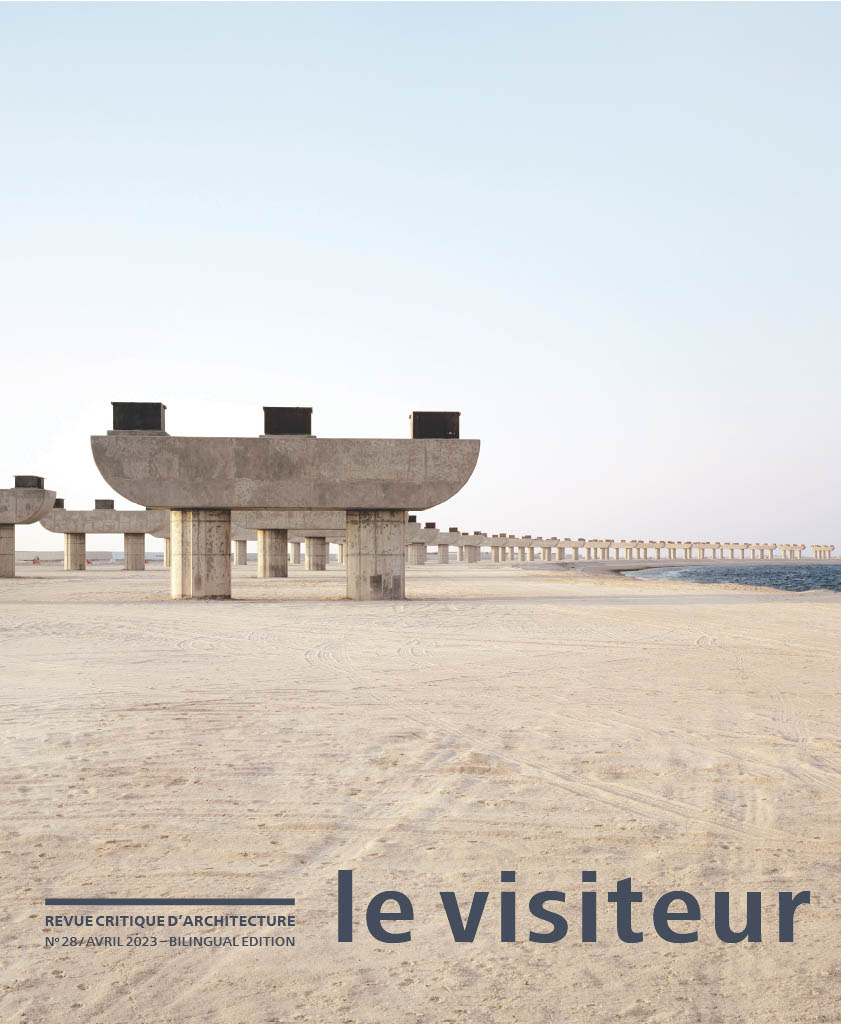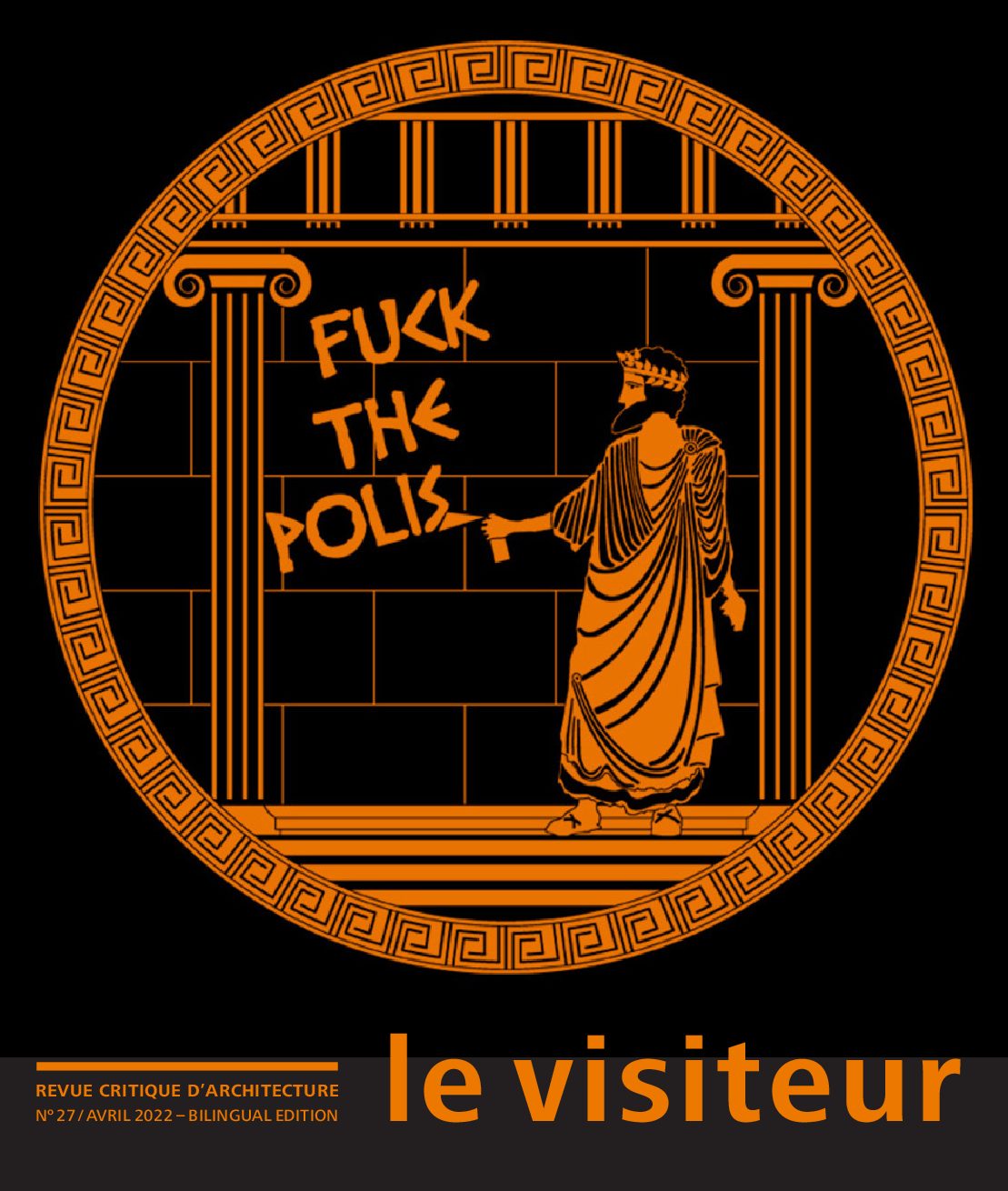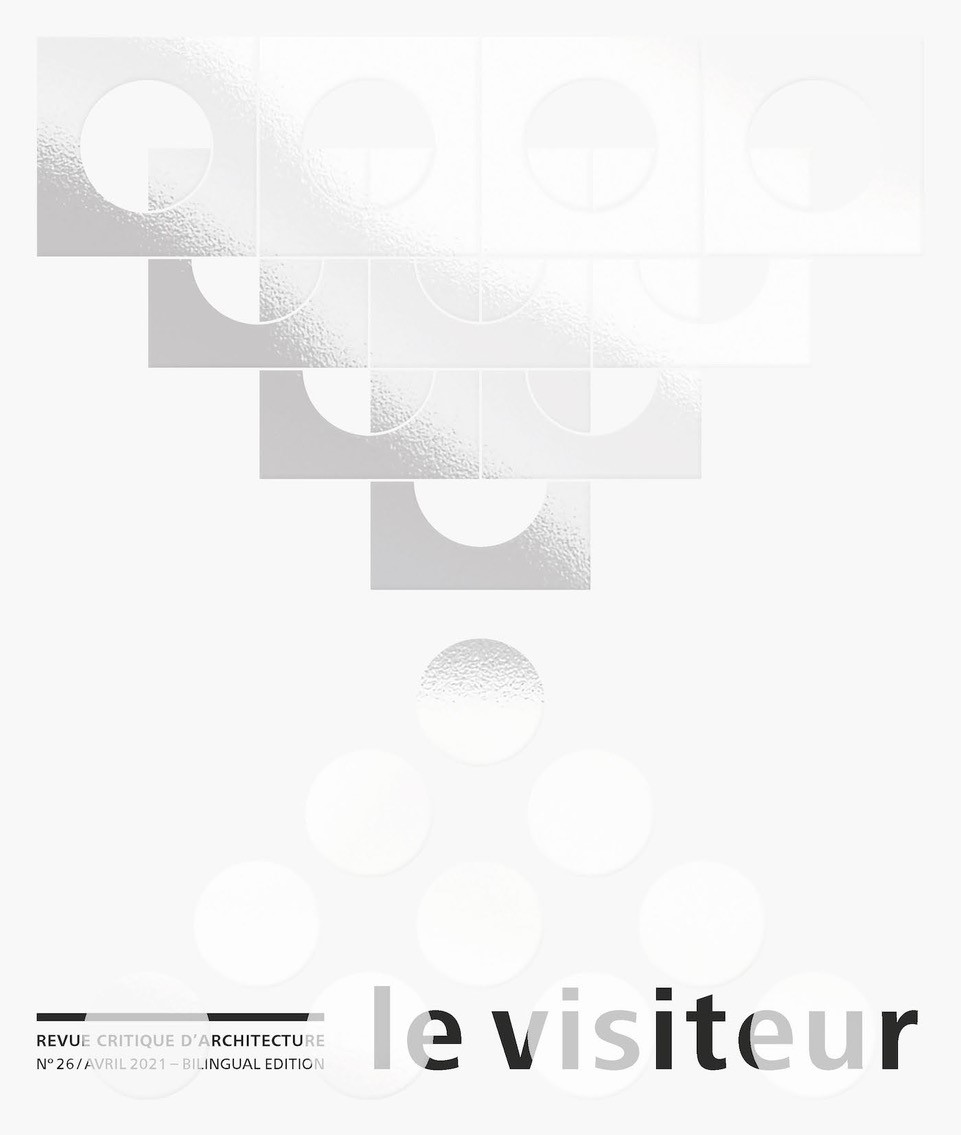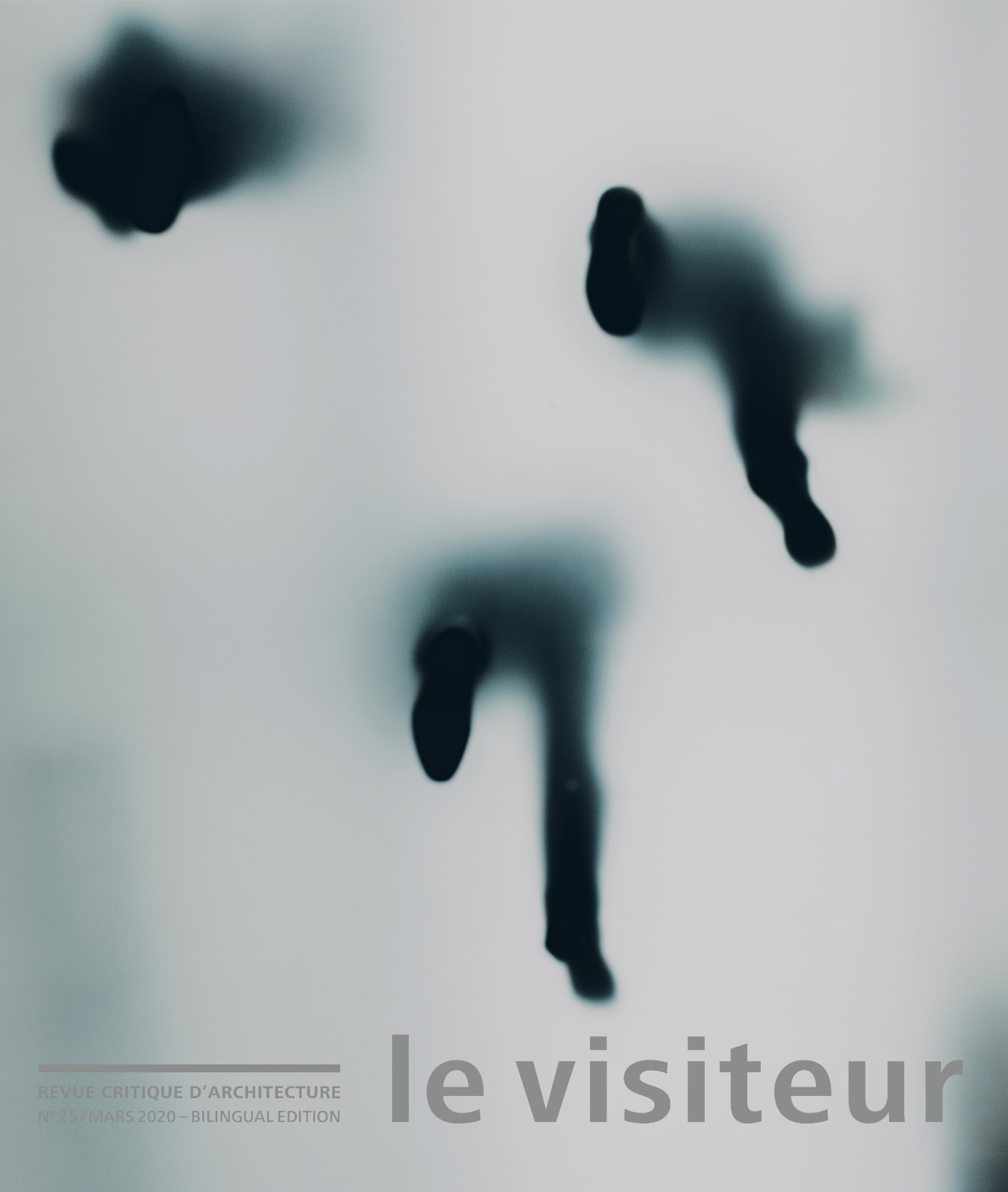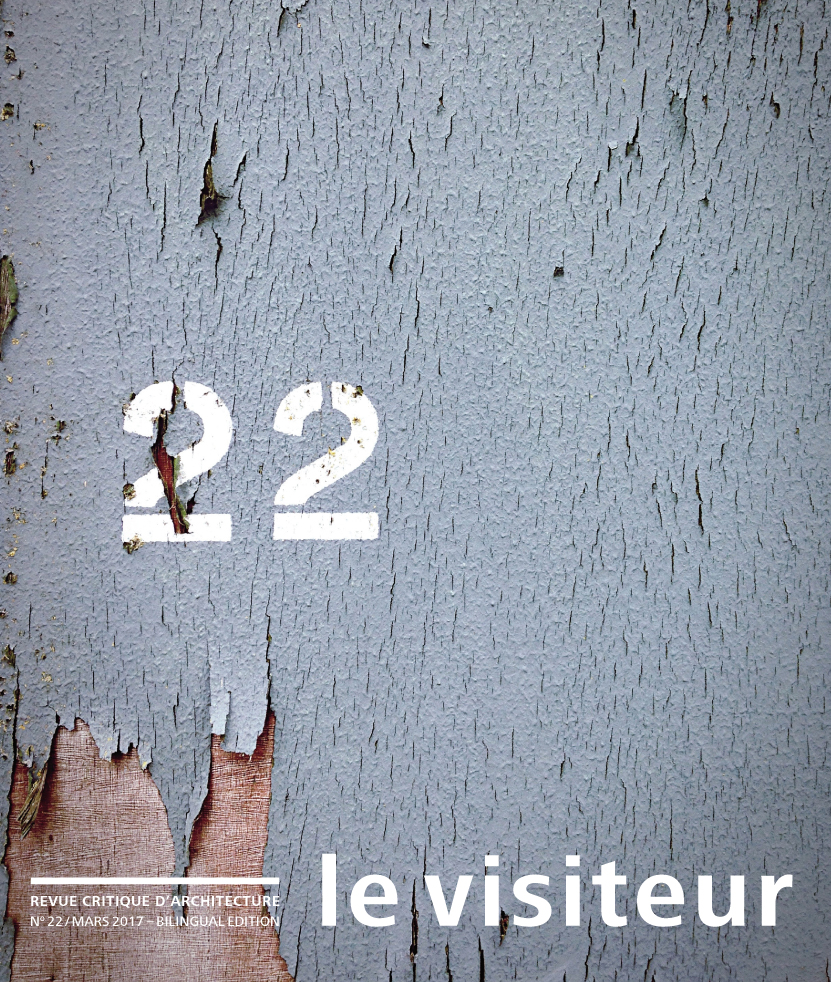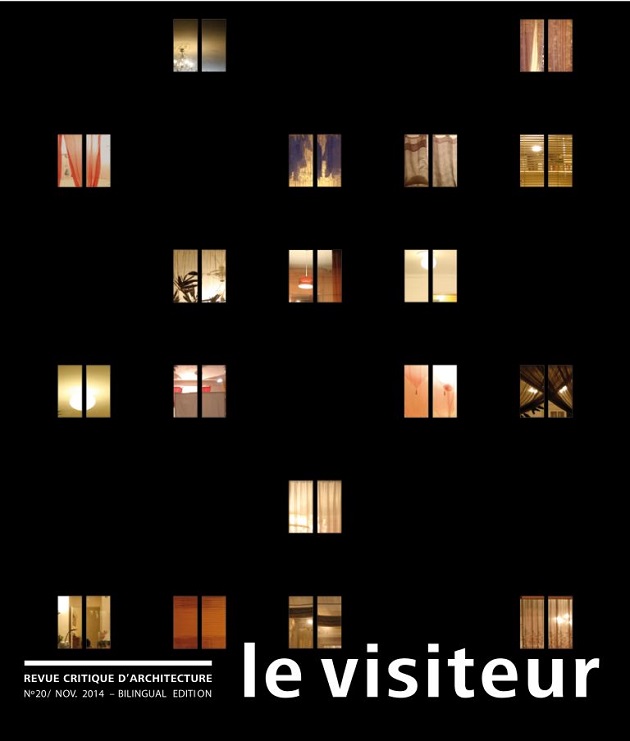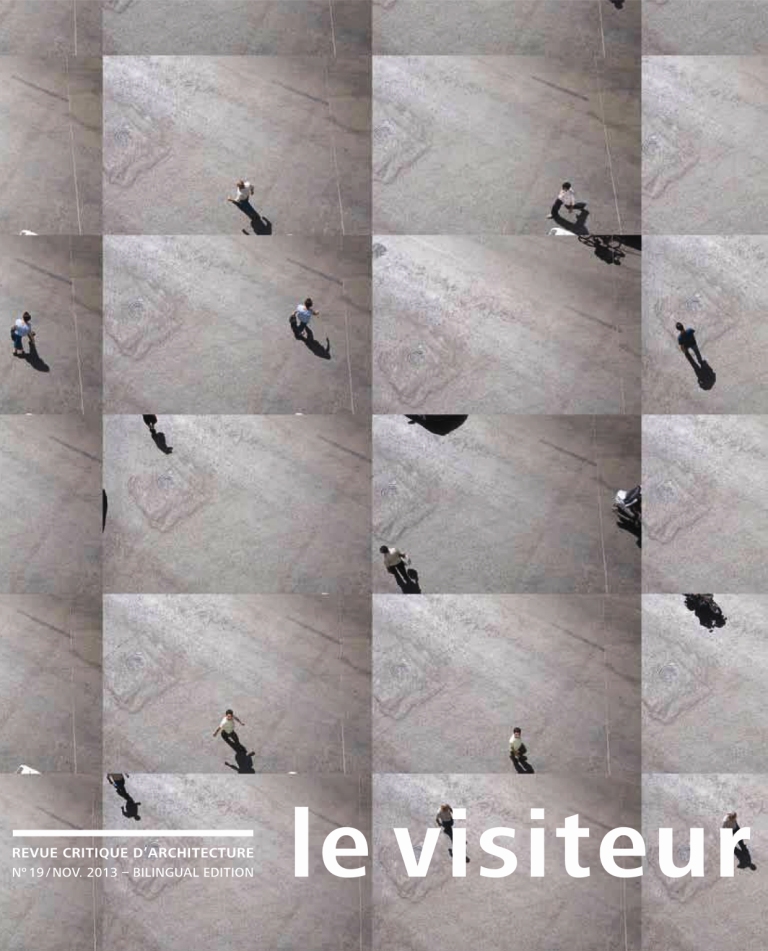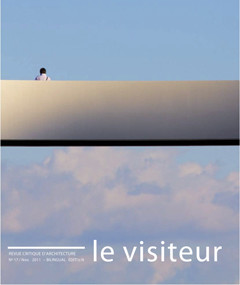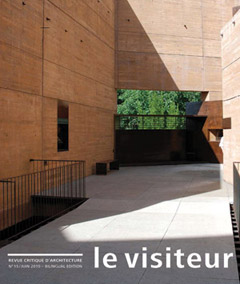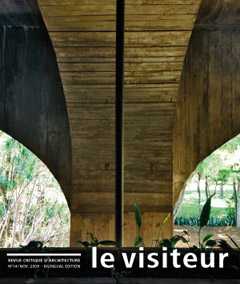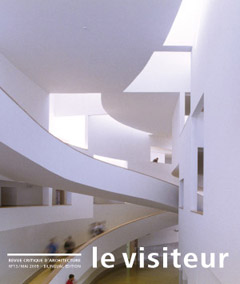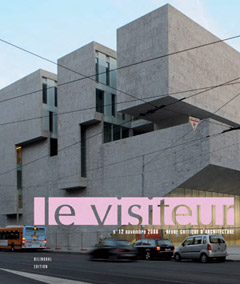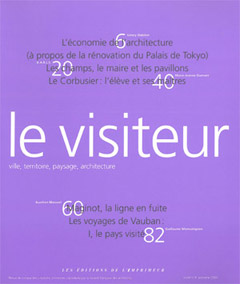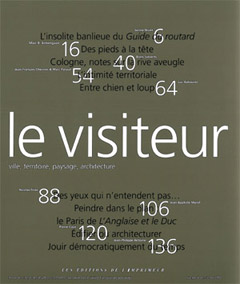Director of publications : Olivier Gahinetsee bio
Born in 1961 in Paris, he is an architect DPLG from the Ecole Nationale Supérieure d’Architecture de Paris-Belleville, and an engineer graduated from the Ecole Polytechnique, and from the Ecole Nationale des Ponts et Chaussées. He is Professor of architecture at the Ecole Polytechnique, and at the Ecole Nationale Supérieure d’Architecture de Strasbourg, and Prize Fellow at the French Academy in Rome, villa Medici (previously known as “Prix de Rome”).
Among his architectural works: Transgenic research laboratories for the CNRS in Orléans (2001); the Tourelles school in Paris (2004), the Z house in Vincennes (2008); dwellings rue Saint-Maur in Paris (2008), and the Ecole Joliot-Curie, Saint-Ouen (2008).
Editorial board chair : Pierre Cayesee bio
Pierre Caye is a Director of Research at Centre Jean Pépin of the C.N.R.S. (Centre National de la Recherche Scientifique) in France, and is currently studying the project question and his origin in the Renaissance and in the Classical Age. He has published Le Savoir de Palladio (Klincksieck, 1995), Empire et Décor (Vrin, 1999), and, together with F. Choay, has translated Alberti’s De Re Aedificatoria for Editions du Seuil (2004).
Editor : Karim Basboussee bio
Karim Basbous is a registered architect who trained at the prestigious Ecole Normale Supérieure d’Architecture de Paris-Belleville. He also holds a doctorate from the Ecole des Hautes Etudes en Sciences Sociales in Paris. He is a tenured academic at the Ecole Nationale Supérieure d’Architecture de Paris-Val de Seine and used to teach at the Ecole Polytechnique. He is also in charge of cultural activities of the Société française des architectes since 2007. His works include Architecture et Dignité, published by Editions Conférence in 2022, Avant l’oeuvre, essai sur l’invention architecturale, (Paris, Editions de l’imprimeur, 2005) and articles in Le Visiteur (of which he is the Editor since 2008), as well as in several journals including Faces, D’A, Les Cahiers de l’Ecole de Blois, New Geographies (Harvard), Albertiana, and Le Monde diplomatique and Libération. He is a member of the Art and Bibliophilia commission at the Centre National du Livre, which provides grants for publishing projects.
The link in the short bio (through the name) leads to open source papers and videos by the author.
Editorial board
Karim Basbous
see bio
Karim Basbous is a registered architect who trained at the prestigious Ecole Normale Supérieure d’Architecture de Paris-Belleville. He also holds a doctorate from the Ecole des Hautes Etudes en Sciences Sociales in Paris. He is a tenured academic at the Ecole Nationale Supérieure d’Architecture de Paris-Val de Seine and also teaches at the Ecole Polytechnique. He is also in charge of cultural activities of the Société française des architectes since 2007. His works include Architecture et Dignité, published by Editions Conférence in May 2022, Avant l’oeuvre, essai sur l’invention architecturale, (Paris, Editions de l’imprimeur, 2005) and articles in Le Visiteur (of which he is the Editor since 2008), as well as in several journals including Faces, D’A, Les Cahiers de l’Ecole de Blois, New Geographies (Harvard), Albertiana, andLe Monde diplomatique and Libération. He is a member of the Art and Bibliophilia commission at the Centre National du Livre, which provides grants for publishing projects.
The link in the short bio (through the name) leads to open source papers and videos by the author.
Pierre Cayesee bio
Pierre Caye is a Director of Research at Centre Jean Pépin of the C.N.R.S. (Centre National de la Recherche Scientifique) in France, and is currently studying the project question and his origin in the Renaissance and in the Classical Age. He has published Le Savoir de Palladio (Klincksieck, 1995), Empire et Décor (Vrin, 1999), and, together with F. Choay, has translated Alberti’s De Re Aedificatoria for Editions du Seuil (2004).
Olivier Gahinet
Antoine Piconsee bio
Picon is Professor of the History of Architecture and Technology and Director of Doctoral Programs (PhD & DDes) at the GSD, Harvard University. He teaches courses in the history of architecture and technology. Trained as an engineer, architect, and historian of science and art, Picon is best known for his work in the history of architectural technologies from the eighteenth century to the present. His French Architects and Engineers in the Age of Enlightenmenthttp://www.gsd.harvard.edu/people/faculty/picon/pub.html#french (1988; English translation, 1992) is a synthetic study of the disciplinary “deep structures” of architecture, garden design, and engineering in the eighteenth century. In addition to six other books, Claude Perrault(1613-1688) ou la curiosité d’un classique (1988), L’Invention de L’ingénieur moderne, L’Ecole des Ponts et Chaussées 1747-1851 http://www.gsd.harvard.edu/people/faculty/picon/pub.html#invention (1992), La ville territoire des cyborgshttp://www.gsd.harvard.edu/people/faculty/picon/pub.html#cyborg (1998), and Les Saint-Simoniens: Raison, Imaginaire, et Utopiehttp://www.gsd.harvard.edu/people/faculty/picon/pub.html#stsimonien (2002), Tra utopia e ruggine, Paesaggi dell’ingegneria dal Settecento a oggihttp://www.gsd.harvard.edu/people/faculty/picon/pub.html#trautopia (2006), Marc Mimram Architect-Engineer: Hybrid (2007) http://www.gsd.harvard.edu/people/faculty/picon/pub.html#mimram , Picon has published numerous articles, mostly dealing with the complementary histories of architecture and technology. He has received a number of awards in France for his writings, including the Medaille de la Ville de Paris and twice the Prix du Livre d’Architecture de la ville de Briey. Picon received engineering degrees from the Ecole Polytechnique and from the Ecole Nationale des Ponts et Chaussees, an architecture degree from the Ecole d’Architecture de Paris-Villemin, and a doctorate in history from the Ecole des Hautes Etudes en Sciences Sociales.
Nathalie Roseau
Laurent Salomonsee bio
After graduating under the Government requirements as an architect in 1979, Laurent Salomon started Architectes Associés, ‘Associated Architects’, a group of architects working mainly at restructuring the Urban outskirts. In 1988 he founded his own practice and works on requalifying the most derelict sections, erecting several widely published buildings. Since 1995 he has developed a great share of activity in Korea, China and Germany. Laurent Salomon has also been a member of the state Consulting Architects from 1995 till 1999. He is an active Professor at the School of Architecture of Paris Belleville since 1982. He was elected as President of the Société Française des Architectes, ‘French Society of Architects’, in 1992 till 1996 and re elected in 2004. He is the author of a consistent collection of articles, and held numerous lectures in France and abroad (Germany, China, Korea, Ecuador, Italy, Japan) and has contributed efforts to several cultural international events, such as the Venice Architecture Biennale in 1996 and the Quito Architecture Biennale in 2003.
Scientific board
Patrick Boucheronsee bio
Patrick Boucheron is a French academic, historian, and publisher whose special field is the Middle Ages and Renaissance, notably in Italy. He was awarded a Ph. D. in 1994 for his dissertation entitled Le pouvoir de bâtir: urbanisme et politique édilitaire à Milan aux XIVe et XVe siècles, which was published four years later. He began his teaching career at the École Normale Supérieure de Fontenay/Saint-Cloud, followed in 1999 by the Université de Paris I (Panthéon-Sorbonne). He was also a member of the Institut Universitaire de France (2004-2009) and became an accredited doctoral adviser in 2009. Since 2012 he has been professor of medieval history at the Université de Paris I, and since 2015 chair of the academic advisory council of the École Française in Rome. That same year he was elected to the Collège de France, occupying a chair in “the history of power in western Europe, 13th to 16th centuries.” His particular field of interest is not just medieval Italy—its cities, princes, and artists—but also the way history is written today. As a member of the editorial board of L’Histoire since 1999, a member of the advisory board of the annual history conference held in Blois (Les Rendez-vous de l’Histoire), and, since 2013, a member of the advisory board of the Musée des Civilisations de l’Europe et de la Méditerranée (MuCEM) in Marseille, Boucheron has always sought to promote the expression of committed, learned discourse on history within the public sphere, which explains his involvement in the world of publishing. He headed the Publications de la Sorbonne from 2010 to 2015 and since 2012 has acted as adviser to the “L’univers historique” imprint at Les Éditions du Seuil.
Pierre-Alain Crosetsee bio
Pierre-Alain Croset (*1957, Geneva) was trained as an architect in Lausanne (EPFL), where he gratuated in 1982. Assistant editor of the architectural international magazine “Casabella” (Milan) from 1982 to 1996, he published many critical works on modern and contemporary architecture. From 1985 to 1993 he was a collaborator of Luigi Snozzi, first as an academic assistant at the Polytechnic School of Lausanne, and later as an architect in the office of Locarno. From 1995 he has worked as a professional architect in Brescia (Italy). Visiting professor at the Columbia University (New York) in 1994, in 1997 he won the position of full professor for architecture at the Technical University of Graz, where he was the dean of the Faculty of architecture from 2001 to 2002. He is currently professor for architectural design at the First Faculty for architecture at the Polytechnic School of Turin.
Xiangning Lisee bio
Xiangning Li is an associate professor of architectural history, criticism and theory at the Tongji University College of Architecture and Urban Planning in Shanghai, China. Li has published widely on contemporary Chinese architecture and urbanism, including a book based on his dissertation, The Real and the Imagined: An Analysis of Value Perspectives in Contemporary Urban Studies. Since 1999, he has been a guest editor and frequent contributor to the Shanghai-based academic journal Time+Architecture. Li recently served as a curatorial consultant and contributor to the 2007 Shenzhen Biennale and the 2008 Shanghai Biennale. He was also a member of the curatorial committee for the Shanghai 2010 EXPO Village’s public art program. In the summer of 2008, Li’s work was featured in an exhibition of Chinese garden architecture in Dresden, Germany. In 2006, he was a visiting scholar at the MIT School of Architecture and Planning. Xiangning Li received his Ph.D. from Tongji University in 2004.
Silvia Milesi
Antoine Picon
Franco Purinisee bio
Franco Purini was born in Italy. He graduated with a degree in architecture in 1971; in 1966 he had founded his own studio with Laura Thermes, working on the connections between architecture and its representation. His designs have been acquired for several public and private collections, including the Centre Pompidou, the Architectural Museum in Frankfurt, and the Fine Arts Museum in Buenos Aires. His work has been widely exhibited both in Italy and abroad, and he has designed several buildings. He is Dean of the department of Architectural and Urban Composition at the Valle Giulia Faculty of Architecture in Rome. He is the author of numerous articles and books including La città uguale (Il Poligrafo, Padua, 2005) and La misura italiana dell’architettura (Laterza, Bari/Rome, 2008). He is a member of the Accademia Nazionale di San Luca and of the Accademia dell’Arte del Disegno in Florence.
Hashim Sarkissee bio
Sarkis received his BArch and BFA from the Rhode Island School of Design in 1987, his MArch with distinction from the GSD in 1989, and his PhD in architecture from Harvard University in 1995. Prior to establishing his own practice in 1998, Sarkis worked for several design firms, including for Rafael Moneo on the souks project of Beirut. He was also programs director of Plan B, a non-profit organization involved in improving the quality of the built environment in Lebanon and the Middle East. Since 1995, Sarkis has been on the faculty of the Harvard University Graduate School of Design (GSD), where he teaches design studios and courses in the history and theory of architecture. In 2002, he was appointed the first Aga Khan Professor of Landscape Architecture and Urbanism in Muslim Societies at the GSD. Sarkis also directs the GSD’s Aga Khan Program. In the past, Sarkis was a lecturer at MIT’s Department of Architecture and a research associate in MIT’s Department of Urban Studies and Planning. He has taught studios at RISD and Yale University and has been visiting lecturer at the American University of Beirut and the Metropolis program in Barcelona. He is the author of several books and articles including Circa 1958: Lebanon in the Pictures and Plans of Constantinos Doxiadis (Beirut: Dar Annahar, 2003), co-editor with Eric Mumford of Josep Lluis Sert: The Architect of Urban Design (New Haven: Yale University Press, 2008), editor of CASE: Le Corbusier’s Venice Hospital (Munich: Prestel, 2001), co-editor with Peter G. Rowe of Projecting Beirut (Munich: Prestel, 1998), and executive editor of the CASE publication series (GSD/Prestel). Sarkis has served on several international juries and has lectured extensively throughout the world.
Nadia Tazisee bio
Nadia Tazi is a program director at the Collège International de Philosophie. She is also an editor at Editions La Découverte, Zone Books (New York), and Siruela (Madrid), and co-founder of L’Autre Journal, where she works as a journalist. She is jointly responsible with Catherine David for the section “The Hundred Days” at the Documenta X in Kassel. Among her publications are Mutations de Rem Koolhaas (2000) at the CAPC in Bordeaux.
Georges Teyssotsee bio
Georges Teyssot has taught history and theory of architecture at the IUAV of Venice (Italy), at Princeton University’s School of Architecture, where he was Director of the Ph.D. program in architecture, and at the Department of Architecture of the ETH (Zurich, Switzerland). He is a professor at Laval University’s School of Architecture in Quebec (Canada). He has co-edited with Monique Mosser a volume entitled The History of Garden Design (London, Thames and Hudson, 2000). He has written the introduction to the Diller + Scofidio volume Flesh: Architectural Probes (New York, 1995), and was the co-curator with Diller + Scofidio of an exhibition on “The American Lawn: Surface of Everyday Life” at the Canadian Center for Architecture (1998). He is the editor of The American Lawn (New York, 1999).
Philippe Potiésee bio
Philippe Potié is architect DPLG, Ph.D. in History of Arts from EHESS (Paris), lecturer à Ecole Nationale Supérieure d’Architecture de Grenoble, chief of the research team Cultures Constructives (ENSAV-ENSAG), and author of several texts, among which Philibert De L’Orme. Figures de la pensée constructive (Parenthèses, 1996).

